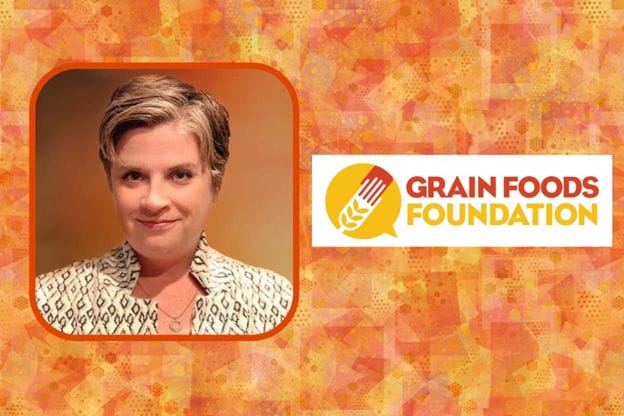BALTIMORE — National Sandwich Day is a uniquely American holiday that has gained global attention over the past few years. While Americans’ relationship with bread can be tenuous, their love affair with sandwiches continues.
To celebrate National Sandwich Day, which takes place Nov. 3, Lallemand Baking partnered with the Grain Foods Foundation (GFF) with an exclusive webinar for Lallemand’s global workforce to debunk some of the most common misconceptions around bread. With more than 140 Lallemand employees in attendance, Julie Miller Jones, member of the GFF Scientific Advisory Board, and Charlotte Martin, registered dietitian and author of The Plant Forward Solution, addressed issues surrounding bread myths … and claims that Americans have a “sandwich problem.”
An article published in the Wall Street Journal called sandwiches “the saboteur of the American diet,” attesting that sandwiches contribute to the overindulgence of sodium, sugar and saturated fat.
But Martin and Miller Jones contested that claim by noting the danger that comes with such a blanket assertion.
“It’s essential to acknowledge the diversity of American sandwich culture,” Martin said. “We have a wide range of options, from traditional deli sandwiches to innovative, health-conscious creations. The problem isn’t with sandwiches themselves; it’s about the choices that are made within that spectrum.”
Calories vs. carbs
Although it’s a popular assumption that reducing bread intake will aid in weight loss, Miller Jones advised that it’s simply not true.
“If we look at the population over time, people are actually eating less bread and fewer grains, but our weight has actually gone up,” she said. “What’s causing weight gain are things like really big servings. A number of people are eating more than the recommended servings. So, it doesn’t mean that bread is bad, but that perhaps the servings are too big.”
Miller Jones also noted that when consumers make half of their grain intake whole grains, they can get 30% of the iron in their diet, as well as all the recommended fiber intake and 13% of calcium.
“It’s important to consider the overall sodium content of a sandwich, rather than focusing solely on the bread itself.” — Charlotte Martin | registered dietitian | author, The Plant Forward Solution
Sandwiches and the glycemic index
Concerns often arise about bread’s glycemic index, or the measure of how quickly a food raises blood sugar levels.
“It’s important to note that the glycemic index can vary widely based on factors like processing, the type of flour used or additional ingredients in the bread,” Martin said. “Research has shown that there is substantial variability in individual responses to glycemic index value determination.”
When it comes to sandwiches, those toppings and fillers can also have an impact on the glycemic index. Toppings, spreads and other accompanying foods must be factored in.
“While it’s true that certain foods can lead to a higher blood sugar response, it’s crucial to recognize that we rarely consume certain foods in isolation,” Martin said. “In many instances, bread is just one component of a larger meal that can include protein, healthy fat or additional fiber sources, all of which can help dampen the blood sugar response. That’s often the case with sandwiches.”
Sodium between the slices
Similarly, salt plays an important role for bread taste, texture and appearance, along with a host of other uses. That said, sodium content in bread can vary greatly among varieties and formulas.
“Not all breads are high in sodium, and there are many lower-sodium options available,” Martin suggested. “Most breads on average contain between 100 and 200 milligrams of sodium per slice, which is well within the daily recommended limit of 2,800 milligrams.”
That makes bread a viable part of a balanced diet, and it’s great news for those who want to reduce sodium intake but still want to enjoy a sandwich.
“It’s important to consider the overall sodium content of a sandwich, rather than focusing solely on the bread itself,” Martin said. “Oftentimes, it’s what’s between the bread that contributes the most sodium to a sandwich.”
Sandwich strategies for health
While some sandwiches might be higher in sodium or fat, they can be customized to create healthy options that include proteins such as lean meats, tuna or hummus, and other ingredients such as fiber-rich vegetables and low-fat condiments like mustard.
This creates an opportunity, Martin said, for Americans to use sandwiches as a way to make informed choices about healthy eating inside a balanced diet.
“People don’t have to stop eating sandwiches,” she said. “They can simply make them more nutritious.”
Martin shared tips on ways consumers and sandwich purveyors alike can do just that.
Start with the grains. There are endless ways to use grain-based vehicles — whether whole grain or enriched — for a healthy sandwich. Martin suggested the “mix and match” strategy.
“Try different types of bread — pita, tortilla, bagel, bun, English muffin, naan,” she said. “Whole grain bread is rich in fiber, providing long-lasting energy and promoting digestive health, and enriched bread can be a great source of essential nutrients. Combing both in the diet, or even in a sandwich, can provide a balanced mix of flavor and nutrition.”
Pile on the produce. This adds freshness as well as flavor. Think beyond the typical lettuce and tomato and invite a variety of fruits and vegetables into the bread.
“Consider adding things like shredded carrots, raisins, apple slices, broccoli slaw or pears,” she said. “The possibilities are endless. And these additions not only introduce a colorful and textural variety, but they also offer unique flavors. Adding a rainbow of colors into a sandwich ensures a wide range of vitamins, minerals and other phytonutrients.”
Pick proteins wisely. Creating a delicious sandwich that’s also nutritious and satisfying requires the right choice of protein.
“Opt for high-quality protein sources like fresh lean beef, pork or chicken; canned tuna; salmon or eggs,” Martin recommended. “Vegetarian options can include nut butters, mashed beans or hummus.”
She also advised limiting proteins that are high in sodium or saturated fats.
Swap the spread. Adding a spread can be a game changer on a sandwich, but choosing a healthy option will take it in the right direction.
“Consider lower-fat and lower-calorie options like mustard, mashed beans or hummus, roasted garlic, low-fat mayo, cottage cheese, tzatziki or another yogurt-based spread, or even mashed berries,” she said.
And, of course, avocado is always an option for including a healthy unsaturated fat in the sandwich.
“These are healthy alternatives that can make a sandwich more exciting without sacrificing taste,” she added.
Cut costs, not flavor. With a bit of creativity, healthy eating doesn’t have to break the bank for consumers. Martin suggested focusing on in-season fruits and vegetables for cost effectiveness that also brings heightened flavor.
“Experiment with new flavors like nutty, sweet, savory or spicy,” she said. “Mix textures like crunchy, smooth, creamy and crispy, and consider temperature variations with hot and cold ingredients.”
When looking at bread as a component of not only the sandwich but also a healthy diet and lifestyle, the possibilities are endless, especially when it comes to maintaining this staple food in a favorable light for consumers.
For more information on how to help promote the health benefits of bread, visit the GFF website.












